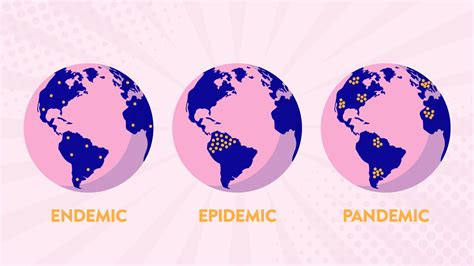Geoengineering Will Have No Negative Effects On The Environment.

In the ongoing discussion about tackling climate change, geoengineering has emerged as a controversial yet intriguing concept. This article aims to explore the potential impact of geoengineering on the environment, delving into the methods, their effectiveness, and the implications for our planet's delicate ecosystems.
Understanding Geoengineering: An Overview

Geoengineering, also known as climate engineering, refers to a set of technologies and strategies proposed to deliberately manipulate the Earth’s climate system in order to counteract the effects of global warming and climate change. These techniques are often considered as a last resort, given the potential risks and ethical considerations they entail.
There are two primary categories of geoengineering techniques: carbon dioxide removal (CDR) and solar radiation management (SRM). CDR methods focus on reducing the concentration of carbon dioxide in the atmosphere, while SRM aims to reflect a small proportion of the sun's energy back into space to cool the planet.
Carbon Dioxide Removal (CDR) Techniques
CDR techniques aim to remove carbon dioxide, a major greenhouse gas, from the atmosphere. Here are some prominent CDR methods:
- Afforestation and Reforestation: Planting trees on a large scale can absorb carbon dioxide through photosynthesis. Reforestation involves restoring forests to their natural state, while afforestation refers to creating new forests.
- Bioenergy with Carbon Capture and Storage (BECCS): This process involves growing biomass (such as crops or algae), converting it into energy, and capturing the carbon dioxide emitted during combustion. The captured CO2 is then stored underground.
- Direct Air Capture: This method utilizes chemical processes to directly capture carbon dioxide from the atmosphere. The captured CO2 can be stored or utilized in various industrial processes.
- Enhanced Weathering: This technique accelerates natural weathering processes by spreading crushed silicate rocks on land or dispersing them in the ocean. The rocks absorb carbon dioxide as they break down, forming carbonates.
While CDR techniques have the potential to significantly reduce atmospheric carbon dioxide levels, they often face challenges related to scalability, cost, and potential environmental impacts.
Solar Radiation Management (SRM) Approaches
SRM techniques aim to reflect a small portion of the sun’s energy back into space, thereby reducing the amount of energy absorbed by the Earth and potentially cooling the planet. Some SRM methods include:
- Marine Cloud Brightening: This method involves injecting sea salt into marine clouds to make them brighter and more reflective, increasing the amount of sunlight reflected back into space.
- Stratospheric Aerosol Injection: This technique proposes to inject sulfate aerosols into the stratosphere, where they can reflect sunlight back into space. Sulfate aerosols are known to have a cooling effect, as observed after large volcanic eruptions.
- Albedo Modification: By increasing the reflectivity of surfaces on Earth, more sunlight can be reflected back into space. This could involve painting roofs and roads white, or even creating reflective artificial surfaces.
SRM methods have the potential to provide rapid cooling effects, but they also come with significant risks and uncertainties. For instance, altering the Earth's radiation balance could have unforeseen consequences on weather patterns and ecosystems.
The Potential Risks and Uncertainties

While geoengineering offers promising solutions to combat climate change, it is essential to acknowledge the potential risks and uncertainties associated with these interventions. Here are some key concerns:
Environmental Impacts
Geoengineering techniques, particularly SRM methods, could have unintended environmental consequences. For example, injecting aerosols into the stratosphere might impact ozone levels and alter precipitation patterns. Additionally, some CDR methods, such as afforestation, could lead to competition for land and water resources, potentially affecting biodiversity and local ecosystems.
Social and Ethical Considerations
The implementation of geoengineering raises ethical dilemmas. Who should decide when and how to deploy these techniques? How can we ensure equitable access and prevent potential abuse of power? Furthermore, the potential side effects of geoengineering could disproportionately affect certain regions or communities, raising questions of justice and equity.
Uncertainty and Irreversibility
Geoengineering involves complex interactions within the Earth’s climate system, which we do not fully understand. The long-term consequences of these interventions are uncertain, and some techniques might have irreversible effects. For instance, if SRM methods are suddenly halted, the planet could experience rapid warming, known as the “termination effect.”
Cost and Scalability
The feasibility of geoengineering techniques depends on their scalability and cost-effectiveness. Some methods, such as afforestation or BECCS, might require substantial resources and land, while others, like direct air capture, could be prohibitively expensive. Finding the right balance between effectiveness and cost is crucial for the practical implementation of geoengineering.
The Way Forward: A Balanced Approach
Given the potential risks and benefits of geoengineering, it is clear that a balanced and cautious approach is necessary. Here are some key considerations for moving forward:
Research and Development
Investing in rigorous scientific research and development is crucial to better understand the potential outcomes of geoengineering techniques. This includes conducting field experiments, modeling studies, and risk assessments to identify the most effective and least harmful methods.
International Cooperation
Geoengineering is a global challenge that requires global cooperation. International agreements and frameworks should be established to govern the research, development, and potential deployment of geoengineering techniques. This ensures that decisions are made collaboratively and take into account the interests and concerns of all nations.
Complementary Strategies
Geoengineering should not be seen as a substitute for reducing greenhouse gas emissions and transitioning to sustainable energy sources. Instead, it should be viewed as a complementary strategy. A holistic approach that combines emission reductions, adaptation measures, and carefully selected geoengineering techniques offers the best chance of effectively addressing climate change.
Public Engagement and Education
Open and transparent dialogue about geoengineering is essential. Public engagement and education initiatives can help foster a better understanding of the potential risks and benefits, enabling informed decision-making at all levels of society.
Conclusion: Navigating the Complexities
Geoengineering presents a complex and multifaceted challenge. While it offers potential solutions to mitigate the impacts of climate change, it also comes with a host of uncertainties and risks. Striking the right balance between harnessing the benefits of geoengineering and mitigating its potential harms requires a careful, evidence-based approach that considers scientific, ethical, and social dimensions.
As we continue to explore the possibilities of geoengineering, it is crucial to remain vigilant, open-minded, and committed to addressing the root causes of climate change. By combining our scientific knowledge, technological innovations, and collaborative efforts, we can navigate the complexities of geoengineering and work towards a sustainable future for our planet.
What are the main criticisms of geoengineering?
+Critics argue that geoengineering may distract from the urgent need to reduce greenhouse gas emissions and could lead to a false sense of security. There are also concerns about the potential for unintended consequences, environmental impacts, and the lack of international governance structures to oversee these interventions.
How effective are geoengineering techniques compared to traditional mitigation strategies?
+Geoengineering techniques are still in the early stages of development and have not been widely deployed. While they offer potential rapid cooling effects, their long-term effectiveness and potential side effects are not fully understood. Traditional mitigation strategies, such as transitioning to renewable energy sources and improving energy efficiency, remain the cornerstone of climate action.
What are some potential benefits of geoengineering research?
+Research into geoengineering can provide valuable insights into the Earth’s climate system and potential intervention strategies. It can help us better understand the complexities of climate change and develop more effective adaptation and mitigation measures. Additionally, certain geoengineering techniques, like afforestation, can have co-benefits such as improving air quality and enhancing biodiversity.


